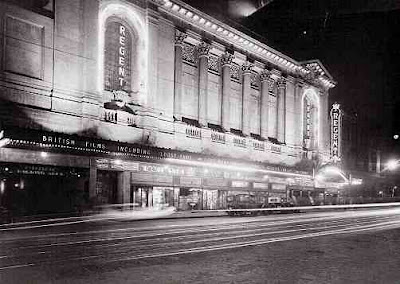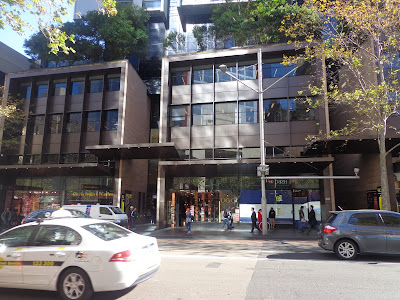Melbourne's European history is short.
The first explorers began surveying the coast in the 17th century, and the first short lived settlement was attempted at Sorrento in 1803. A more permanent township was established by ambitious pastoralists in 1835.
As a city, we haven't even reached our bicentenary.
But human occupation of what became Port Phillip Bay stretches back much farther back than this.
Melbourne's Indigenous population established itself in the area between 31 000 and 40 000 years ago. By the time the first European settlers arrived, the land around Port Phillip Bay was home to five individual Indigenous Nations, who peacefully co-existed under the banner of the Kulin Nation. Each of these Nations had their own language and traditions, although there was some overlap between their cultural traits.
The arrival of farmers, merchants and soldiers would change the local Indigenous way of life forever. But, as a small reminder that local history did not start in 1835, our modern city is still dotted with a number of Indigenous place names. A short selection of these:
Bulleen
This suburb in Melbourne's inner east can trace the route of its name to the Bolin Bolin Billabong, a key watering hole for the area's original Indigenous inhabitants. The Billabong is still in existance, now lying in... Bulleen Park,
Bundoora
Bundoora is an Indigenous word, normally translated as 'Place where kangaroos live.'
Carrum/Carrum Downs
The name Carrum is linked to the Indigenous word 'Karrum', a the local name for a boomerang.
Coolaroo
North of the CBD, the suburb of Coolaro takes its name for the local Indigenous word for a brown snake.
Dandenong
All the different iterations of Dandenong (suburb, mountain, shire council) can be traced to the Wurundjeri word 'Tanjenong', which was the local name for the creek that ran out of the ranges towards the Yarra.
Darebin
This shire council in Melbourne's inner north takes its name from the Indigenous word for 'Swallows', a common bird in the area.
Koo Wee Rup
On the southern outskirts of the city, Koo Wee Rup is derived from the Indigenous name for this area Kowe Nerup; Kowe, meaning blackfish, and Nerup meaning swimming. So this was a swampy area, and a traditional fishing ground for the area's first inhabitants.
Kooyong
Blue blood suburb Kooyong was named by Government surveyor Robert Hoddle after the Kooyong Koot Creek (now Gardiner's Creek). Kooyong is an Indiegnous word meaning camp, or resting place.
Maribyrnong
This inner city suburb is named after it's dominant feature; the Maribyrnong River, which was originally dubbed 'Saltwater Creek' by the first European Settlers. The Indigenous name for the river is Mirring-Gnay-Bir-Nong, which was adopted for both river and suburb in the late 19th century.
Monbulk
This green, outer suburban fruit production belt takes the Indigenous name for the area; 'Monbulk' was a word used to indicate the granite cliffs that were subsequently quarried by European settlers.
Moorabbin
South of Melbourne, this area was known as 'Mooroobin' by the local Indigenous population, which was adopted as the name for the first cattle run established in the area by John King.
Nar Nar Goon
On the eastern fringe of the city, Nar Nar Goon is named after a local Indigenous name for the koala, prevalent in the area in pre-European times.
Narre Warren
Narre Warren was the Indigenous name for this area, loosely translated as 'hilly country.'
Nunawading
Nunawading was the traditional name for this area east of the city, which was a word that indicated a ceremonial ground. While the first settlers adopted this name when they arrived in the area in 1854, Nunawading was then given the more English sounding name of 'Tunstall' in the 1870s. The original name was restored in 1945.
Tullamarine
The suburb best known as home to Melbourne's airport was named after Wurundjeri elder Tullamareena, who was present when John Batman first sailed up the Yarra, and who lived in this area. In 1838, Tullamareena was arrested for stealing sheep, and imprisoned in the Melbourne jail. He escaped shortly afterwards, and took revenge on his captors by setting fire to the wooden structure, burning it to the ground. Recaptured, Tullamareena was then sent by ship to Sydney for trial (the standard process in the very early days of Melbourne, when there was no local magistrate). When the local authorities realised he understood no English, he was acquitted and set free... in Sydney, a thousand kilometres from his home. No further contact was recorded with Tullamareena, and his fate is unknown.
Yarra River
The naming of Melbourne's most famous geographical feature is based on a misunderstanding. The first European settlers thought that 'Yarra Yarra' was the local name for the river that they sailed up from the coast, when, in fact, it was subsequently found that this referred only to the small waterfall, that used to tumble gently near Elizabeth Street. By the time this misunderstanding was discovered, the name Yarra had already stuck.
The first explorers began surveying the coast in the 17th century, and the first short lived settlement was attempted at Sorrento in 1803. A more permanent township was established by ambitious pastoralists in 1835.
As a city, we haven't even reached our bicentenary.
But human occupation of what became Port Phillip Bay stretches back much farther back than this.
 |
| The five Nations that make up the Kulin Nation. |
Melbourne's Indigenous population established itself in the area between 31 000 and 40 000 years ago. By the time the first European settlers arrived, the land around Port Phillip Bay was home to five individual Indigenous Nations, who peacefully co-existed under the banner of the Kulin Nation. Each of these Nations had their own language and traditions, although there was some overlap between their cultural traits.
The arrival of farmers, merchants and soldiers would change the local Indigenous way of life forever. But, as a small reminder that local history did not start in 1835, our modern city is still dotted with a number of Indigenous place names. A short selection of these:
Bulleen
This suburb in Melbourne's inner east can trace the route of its name to the Bolin Bolin Billabong, a key watering hole for the area's original Indigenous inhabitants. The Billabong is still in existance, now lying in... Bulleen Park,
Bundoora
Bundoora is an Indigenous word, normally translated as 'Place where kangaroos live.'
Carrum/Carrum Downs
The name Carrum is linked to the Indigenous word 'Karrum', a the local name for a boomerang.
 |
| The Eastern Brown Snake, common in Melbourne's outskirts. |
Coolaroo
North of the CBD, the suburb of Coolaro takes its name for the local Indigenous word for a brown snake.
Dandenong
All the different iterations of Dandenong (suburb, mountain, shire council) can be traced to the Wurundjeri word 'Tanjenong', which was the local name for the creek that ran out of the ranges towards the Yarra.
 |
| The Welcome Swallow, one of several species common in Melbourne. |
Darebin
This shire council in Melbourne's inner north takes its name from the Indigenous word for 'Swallows', a common bird in the area.
Koo Wee Rup
On the southern outskirts of the city, Koo Wee Rup is derived from the Indigenous name for this area Kowe Nerup; Kowe, meaning blackfish, and Nerup meaning swimming. So this was a swampy area, and a traditional fishing ground for the area's first inhabitants.
Kooyong
Blue blood suburb Kooyong was named by Government surveyor Robert Hoddle after the Kooyong Koot Creek (now Gardiner's Creek). Kooyong is an Indiegnous word meaning camp, or resting place.
Maribyrnong
This inner city suburb is named after it's dominant feature; the Maribyrnong River, which was originally dubbed 'Saltwater Creek' by the first European Settlers. The Indigenous name for the river is Mirring-Gnay-Bir-Nong, which was adopted for both river and suburb in the late 19th century.
Monbulk
This green, outer suburban fruit production belt takes the Indigenous name for the area; 'Monbulk' was a word used to indicate the granite cliffs that were subsequently quarried by European settlers.
Moorabbin
South of Melbourne, this area was known as 'Mooroobin' by the local Indigenous population, which was adopted as the name for the first cattle run established in the area by John King.
Nar Nar Goon
On the eastern fringe of the city, Nar Nar Goon is named after a local Indigenous name for the koala, prevalent in the area in pre-European times.
Narre Warren
Narre Warren was the Indigenous name for this area, loosely translated as 'hilly country.'
Nunawading
Nunawading was the traditional name for this area east of the city, which was a word that indicated a ceremonial ground. While the first settlers adopted this name when they arrived in the area in 1854, Nunawading was then given the more English sounding name of 'Tunstall' in the 1870s. The original name was restored in 1945.
 |
| Tullamareena's escape, depicted by W.Liardet (1840) |
The suburb best known as home to Melbourne's airport was named after Wurundjeri elder Tullamareena, who was present when John Batman first sailed up the Yarra, and who lived in this area. In 1838, Tullamareena was arrested for stealing sheep, and imprisoned in the Melbourne jail. He escaped shortly afterwards, and took revenge on his captors by setting fire to the wooden structure, burning it to the ground. Recaptured, Tullamareena was then sent by ship to Sydney for trial (the standard process in the very early days of Melbourne, when there was no local magistrate). When the local authorities realised he understood no English, he was acquitted and set free... in Sydney, a thousand kilometres from his home. No further contact was recorded with Tullamareena, and his fate is unknown.
Yarra River
The naming of Melbourne's most famous geographical feature is based on a misunderstanding. The first European settlers thought that 'Yarra Yarra' was the local name for the river that they sailed up from the coast, when, in fact, it was subsequently found that this referred only to the small waterfall, that used to tumble gently near Elizabeth Street. By the time this misunderstanding was discovered, the name Yarra had already stuck.






















































